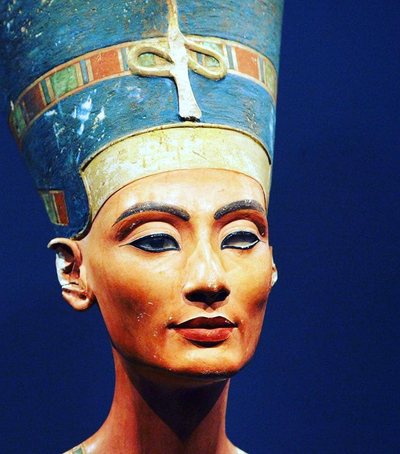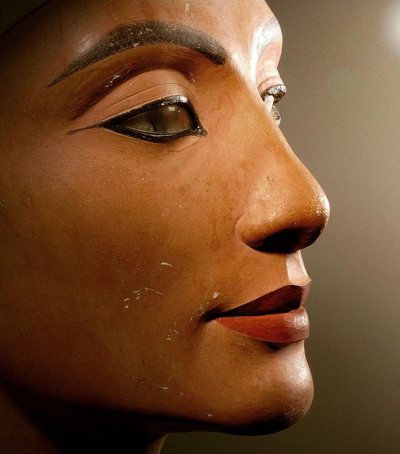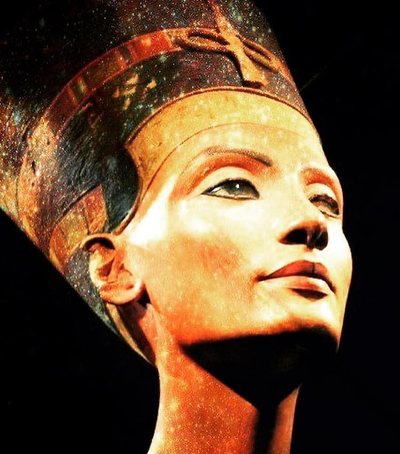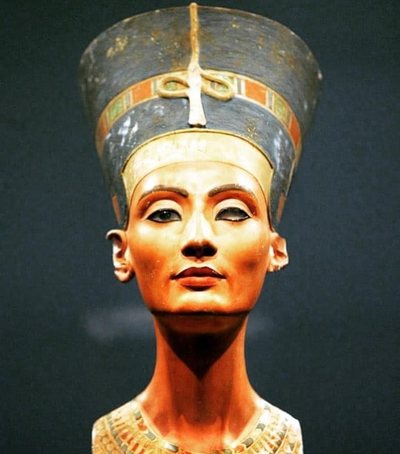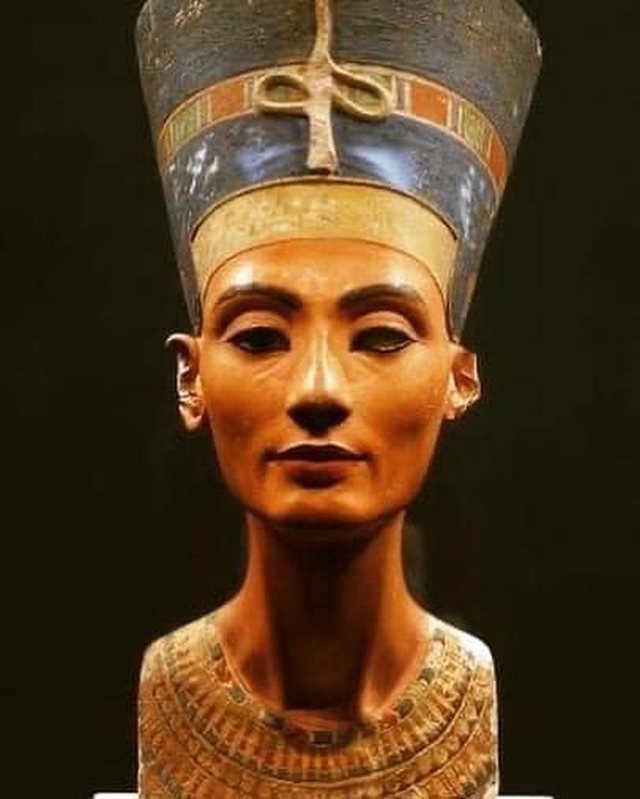
The bust found at Amarna in 1912 by a German expedition dates to the reign of Akhenaten (1375–1357 BC).
Queen Nefertiti, the pharaoh's wife, wears a crown-wig on her head, characteristic of the Eighteenth Dynasty, a model previously found only on Akhenaten's terrible mother, Queen Tiy.
The bust is made of limestone, partially painted; one eye is made of rock crystal.
The ears and headband, along with the royal snake on the forehead, are broken.
Scholars have debated whether the object was perhaps a studio bocetos for court artists.
The bust of Nefertiti is one of the most popular works of art in the world.
It's printed on scarves, carved into pendants and coffee tables.
But, from what I've noticed, I've never seen the bust accurately reproduced.
Copycats soften it, feminize it, and humanize it.
In fact, the bust has an unbearable harshness; it is an object too disturbing to keep in the house.
Even art books disguise him: he is usually depicted in profile or at a slight angle, so that the absence of the pupil of his left eye is not too noticeable or obscured.
What happened to the eye?
Maybe it wasn't needed for a studio sketch and just wasn't finished.
But it was often the case that, in the case of statues or paintings of the dead, the eye would be removed — a way of denying someone their identity, of eliminating them from survival in the afterlife.
Akhenaten's reign brought deep divisions.
His creation of a new capital, efforts to suppress the powerful priestly class, establishment of monotheism, and inventions of artistic style were later abolished by his son-in-law, Tutankhamun, the short-lived son-king.
Nefertiti may have lost her eye during the destruction of the Eighteenth Dynasty.**
By Camille Paglia

